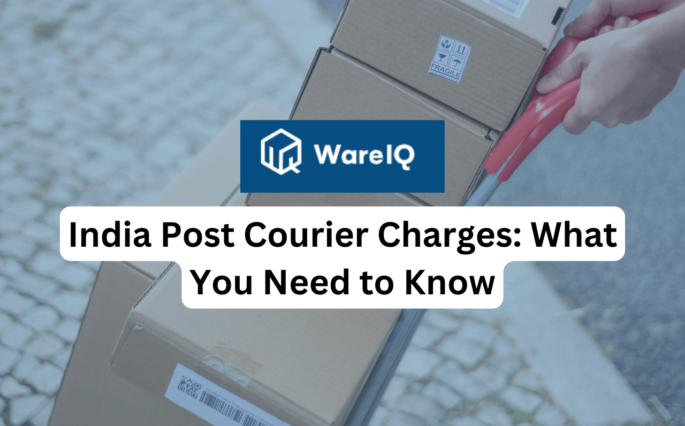Efficient eCommerce Fulfillment for Furniture & Large Items: Insights from WareIQ and Pepperfry

In the dynamic world of eCommerce, the fulfillment of furniture and large items presents unique challenges. These challenges are significantly different from those faced in the supply chain of smaller goods. Recently, WareIQ hosted a webinar with Pepperfry, India’s largest furniture and home décor brand, to discuss these complexities. This blog delves into the key insights shared during the webinar, focusing on strategies for efficient eCommerce fulfillment for furniture and large items.
The Unique Challenges of eCommerce Fulfillment for Furniture & Large Items
Space Optimization and Inventory Management
One of the primary challenges in eCommerce fulfillment for furniture is space optimization. Unlike smaller items, furniture and bulky products require significant storage space. Effective inventory management is crucial in this context. Pepperfry employs advanced racking systems, often customized to handle bulky items. They use G+8 and G+9 racking to maximize storage efficiency, despite the large size of the products.
In addition to space optimization, inventory segmentation plays a critical role. By categorizing inventory based on demand patterns using the ABC analysis, Pepperfry can prioritize the storage of fast-moving items (A-class) while using a make-to-order strategy for slower-moving items (B and C-class). This approach helps in managing the extensive range of SKUs without overburdening the storage facilities.
Efficient Shipping and Handling
Shipping and handling large items require specialized strategies. Bulky items are prone to damage, and their volumetric weight necessitates the use of appropriate vehicles. Pepperfry uses 32 ft or 40 ft single-axle containers for mid-mile and last-mile deliveries to optimize the space within the trucks. Choosing the right vehicles and network optimization are crucial to minimize shipping costs and reduce the damage rate.
Moreover, the handling of these items involves using customized pallets and trucks designed to transport bulky products safely. This careful consideration in shipping and handling processes helps in maintaining the integrity of the products throughout the supply chain.
Reducing Damage Rate
Employing Quality Control Checkpoints
Quality control is paramount in reducing the damage rate of large and bulky items. Given the high value and fragility of furniture, any minor damage can result in significant customer dissatisfaction. Pepperfry has implemented a systematic approach to quality checks at multiple points in the supply chain. This includes detailed inspections during loading and unloading, as well as during transit.
Value Recovery Through Repair and Refurbishment
Pepperfry emphasizes value recovery by repairing and refurbishing damaged parts to minimize losses. When minor defects, such as scratches or dents, are found, the damaged components are either repaired or replaced, making the items sellable again. This approach not only reduces waste but also ensures that customers receive products in pristine condition, thereby enhancing customer satisfaction.
Protective Padding in Courier Vehicles
Another crucial aspect of reducing damage is the use of protective padding in courier vehicles. By installing padding in delivery vehicles, Pepperfry minimizes the risk of damage during transit. This additional protective measure ensures that bulky items, which are more prone to damage, are transported safely, further reducing the damage rate.
The Importance of Training and Technology
A well-trained workforce is essential for handling bulky items efficiently. Pepperfry invests in regular training programs for their staff, focusing on the proper techniques for handling, storing, and transporting large items. These training sessions are not one-time events but are conducted periodically to ensure that the staff is up-to-date with the latest best practices.
Technology also plays a crucial role in streamlining the fulfillment process. Pepperfry uses advanced inventory management systems to track the movement of products from the warehouse to the customer. This automated system helps in reducing human errors and ensures that the entire process is efficient and transparent.
Customer Interaction and Delivery Timelines
Effective customer interaction is vital in the delivery of large items. Unlike smaller packages that can be left at the doorstep, furniture deliveries often require coordination with the customer to ensure they are available to receive the product. Pepperfry places a high emphasis on scheduling deliveries at the convenience of the customer, which helps in reducing failed delivery attempts and associated costs.
Understanding that furniture is not an urgent need, Pepperfry manages customer expectations by clearly communicating the delivery timelines. While the timelines can be as long as 20 days, customers are generally receptive to this, given the nature of the product. This careful planning and communication help in maintaining high customer satisfaction levels.
Conclusion
The eCommerce fulfillment for furniture and large items involves navigating a complex set of challenges, from space optimization and inventory management to shipping, handling, and customer interaction. By implementing robust quality control measures, investing in training and technology, and maintaining clear communication with customers, companies like Pepperfry are able to provide a seamless and satisfying shopping experience.
The insights shared in the WareIQ webinar highlight the importance of a well-coordinated supply chain strategy tailored to the unique needs of bulky items. As eCommerce continues to grow, these strategies will be essential in ensuring that furniture and large items are delivered efficiently, safely, and to the satisfaction of the customer.\
You may also like to check : eCommerce Fulfillment for Innerwear: Insights from Modenik Lifestyle








